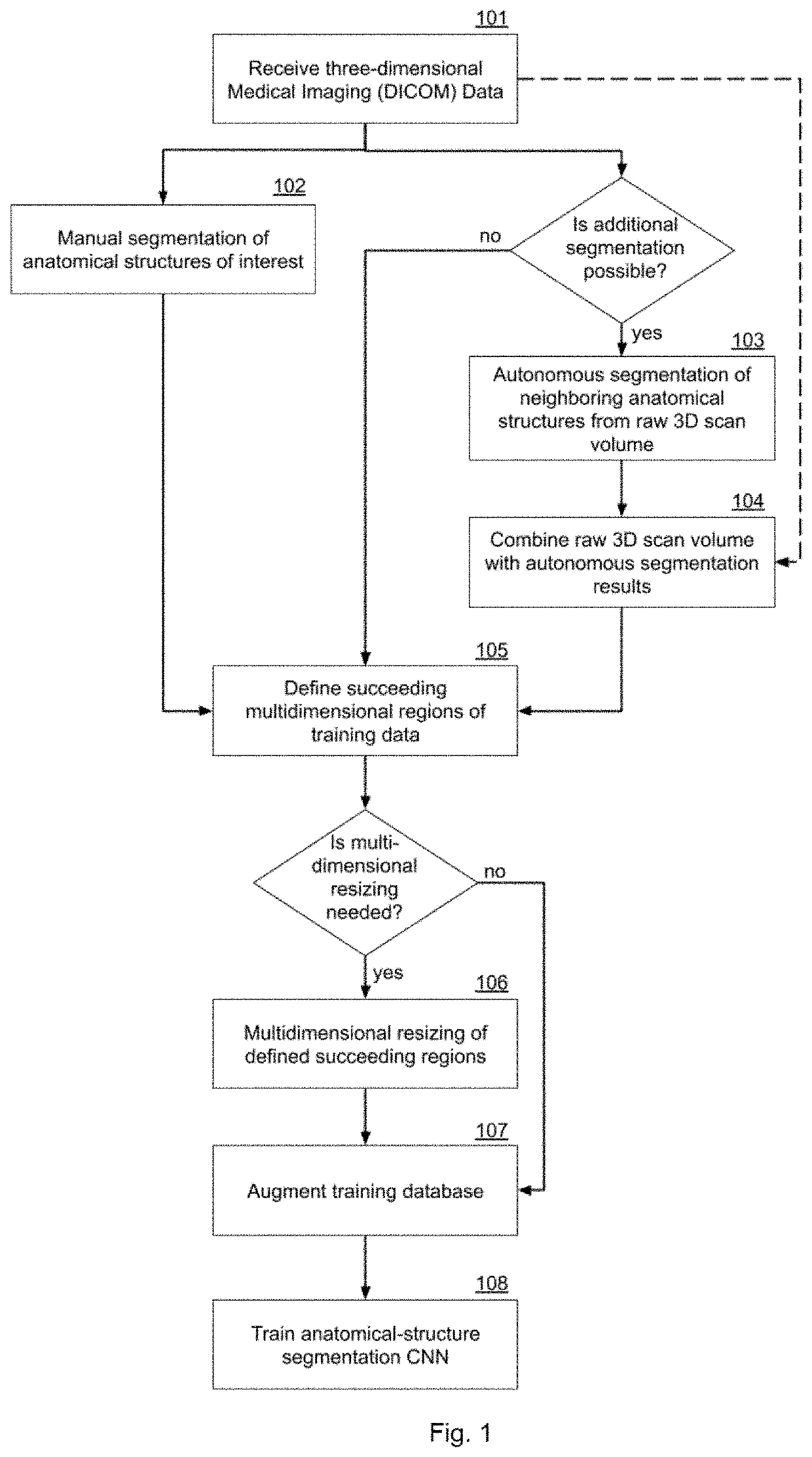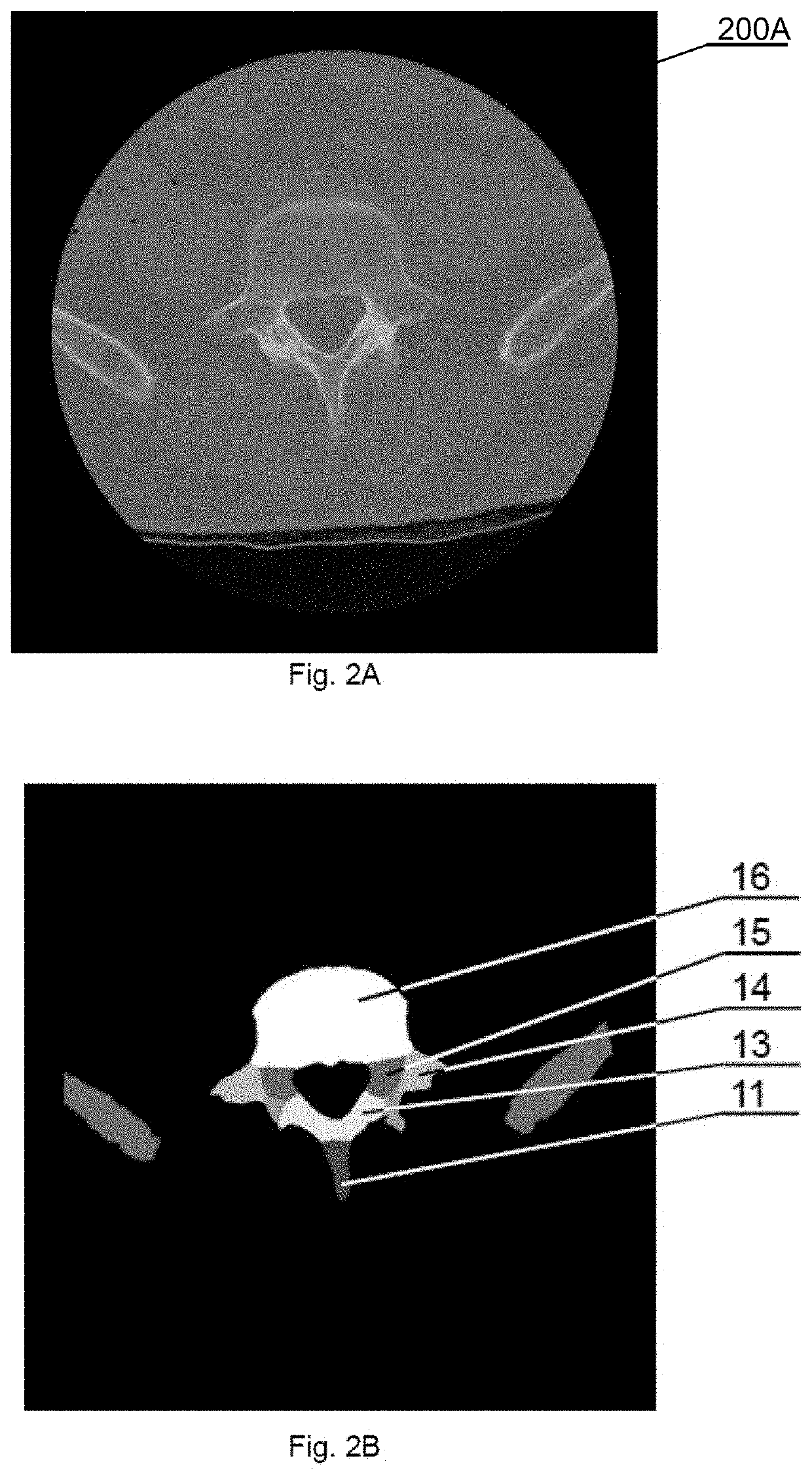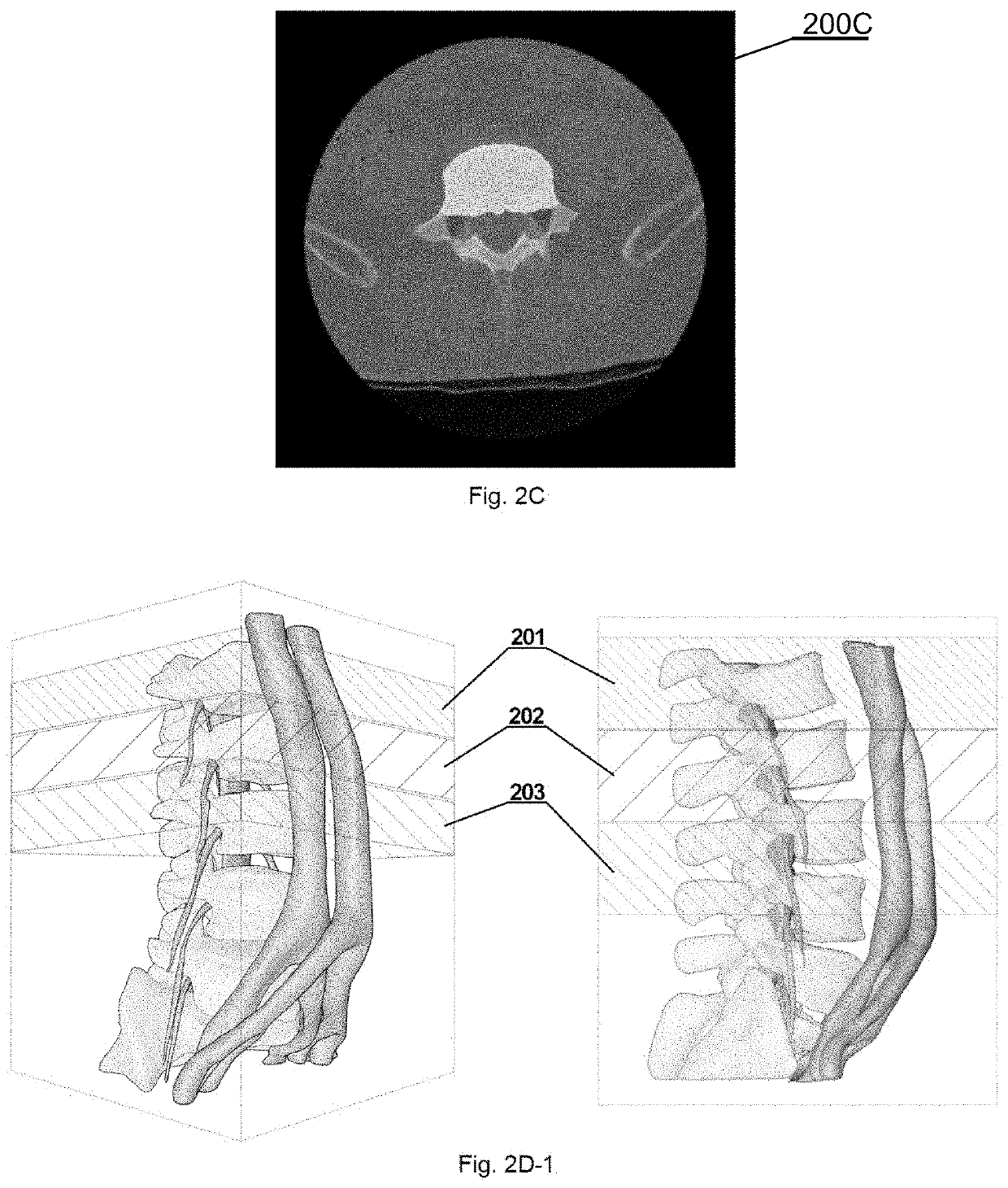Autonomous multidimensional segmentation of anatomical structures on three-dimensional medical imaging
a three-dimensional medical imaging and multi-dimensional segmentation technology, applied in the field of computer assisted surgery, diagnostics, surgical planning, etc., can solve the problems of low quality image datasets that are difficult to use in machine learning applications, difficulty in adequately navigating tools and implants, and inability to accurately segment images, etc., to enhance the segmentation cnn performance and increase the dimensionality of input data
- Summary
- Abstract
- Description
- Claims
- Application Information
AI Technical Summary
Benefits of technology
Problems solved by technology
Method used
Image
Examples
Embodiment Construction
[0039]Certain embodiments of the invention relate to processing three-dimensional scan volume comprising a set of medical scan images of the anatomical structures including, but not limited to, vessels (aorta and vena cava), nerves (cervical, thoracic or lumbar plexus, spinal cord and others), bones, and widely defined soft and hard tissues. Certain embodiments of the invention will be presented below based on an example of vascular anatomical structures comprising the aorta and vena cava in the neighborhood of a spine as a bone structure, but the method and system can be equally well used for any other three-dimensional anatomical structures visible on medical imaging.
[0040]Moreover, certain embodiments of the invention may include, before segmentation, pre-processing of low-quality images to improve the visibility of different tissues. This can be done by employing a method presented in a European patent application EP16195826 by the present applicant or any other pre-processing q...
PUM
 Login to View More
Login to View More Abstract
Description
Claims
Application Information
 Login to View More
Login to View More - R&D
- Intellectual Property
- Life Sciences
- Materials
- Tech Scout
- Unparalleled Data Quality
- Higher Quality Content
- 60% Fewer Hallucinations
Browse by: Latest US Patents, China's latest patents, Technical Efficacy Thesaurus, Application Domain, Technology Topic, Popular Technical Reports.
© 2025 PatSnap. All rights reserved.Legal|Privacy policy|Modern Slavery Act Transparency Statement|Sitemap|About US| Contact US: help@patsnap.com



